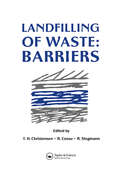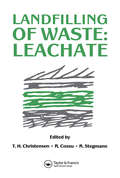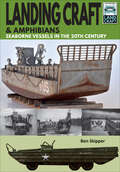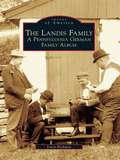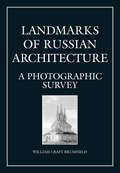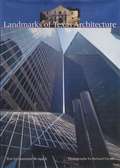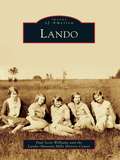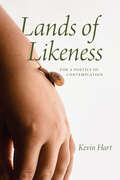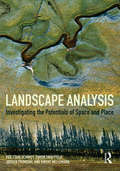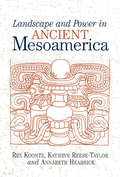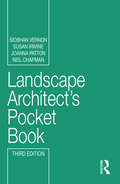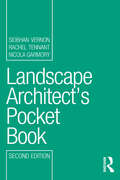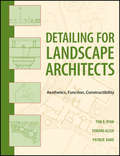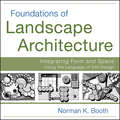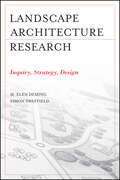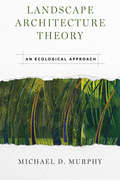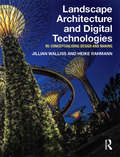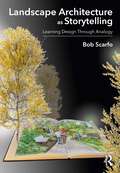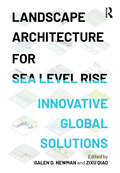- Table View
- List View
Lander
by Traci Foutz Joe Spriggs Carol ThiesseBefore Lander became a town, the area had already been the summer hunting grounds for numerous Native American tribes, seen a few rendezvous, and had become a freighting hub. Supplying goods for the miners in the South Pass area and goods for the cavalry and natives at Fort Washakie, the freight wagons rolled year-round. When the Lander townsite was plotted in 1880, the main road remained wide enough that a 20-hitch team could turn around. As more people settled in the area, Lander became an agricultural-based town. It was known throughout the state for its abundance of produce, hay, blooded horses, cattle, and sheep. But it was not all work for the settlers; the Wind River Mountains also beckoned. Lander, located at the edge of the southern half of the Shoshone National Forest, became an outfitting stop for alpinists, scientists, and others seeking adventure. Once word of the vast elk and deer herds and the abundance of trout in those high mountain lakes was out, hunters and fisherman came from all over. It also did not take long for Western adventure writers to highlight that Lander was a good place for tourists who wanted to experience the romance of the west through horseback riding, camping, and mountain adventures.
Landfilling of Waste: Barriers (Landfilling Of Waste Ser. #Vol. 2)
by T. H. ChristensenIn view of the great demand for information regarding landfills, a series of international reference books on landfilling of waste has been established. This book, the second volume, deals with lining and leachate collection. It consists of edited, selected contributions to the International Symposia on Sanitary Landfills held in Sardinia every second year.
Landfilling of Waste: Leachate
by T. H. Christensen R. Cossu R. StegmannLandfilling of waste has increased dramatically over recent years and there have been many examples of landfills which are unacceptable on environmental and health grounds. This is one of a group of international reference books which address this problem, specifically in this case covering the strongly contaminated wastewater developed from landfi
Landing Craft & Amphibians: Seaborne Vessels in the 20th Century (LandCraft #10)
by Ben SkipperFrom the wars of antiquity to the recent events in South West Asia, landing craft and amphibians have been an ever-present sea borne and battle space asset in one form or another for the commander wanting to get boots on the ground. Refined during the Second World War with the introduction of the Amphibian, and again with the perfection of the hovercraft, the landing craft’s finest hour in popular consciousness occurred on 6 June 1944. This LandCraft title focuses on Landing Craft and Amphibian development during the Second World War as versatile sea borne assets. The book also looks at the post-war evolution of the Landing Craft and Amphibians, and how the simple concepts of their design remain alive and in use almost a century later. This LandCraft title offers the modeler an exciting range of subjects, era and theater choices, especially those modeling the Second World War.
Landis Family, The: A Pennsylvania German Family Album
by Irwin RichmanThe Landis family of Landis Valley was ordinary and extraordinary at the same time. Its members were typical Pennsylvania Germans of their era, focused on farming and family, yet they also traveled, edited magazines, and became the founders of the Landis Valley Museum. The Landis family settled in Lancaster County in the 18th century, where Henry Harrison Landis and his wife, Emma Caroline Landis, raised their children, Henry Kinzer, George Diller, and Nettie Mae, in a cross-cultural environment. Descended from Mennonite and Reformed Church families, the Landis family formed an appreciation for both cultures, and recognizing the valuable contributions of Pennsylvania Germans to American culture, they collected images and objects to chronicle their unique way of life. Using historic photographs, many never before published, The Landis Family: A Pennsylvania German Family Album provides insights into the family life, customs, and agricultural traditions of this unique region.
Landmarks of Russian Architect
by BrumfieldA comprehensive guide to Russian architecture, this volume is designed for students and other readers wishing to gain an understanding of the subject.
Landmarks of Texas Architecture
by Lawrence W. Speck"This selection of twenty of Texas' proudest architectural achievements is a tiny sampling of the state's rich, but little-heralded, architectural heritage. The visual presentation of these buildings in Richard Payne's insightful photographs is evidence enough to any student of Texas culture that there are deep and meaningful tracks of our civilization in the state's built environment. . . . In the stones of the Alamo and the steel and glass of our downtown skyscrapers lie the silent embodiment of who we are and where we have been."—from the IntroductionTexas architecture has never been, nor is it likely to be in the future, an easily digested whole.<P><P>This collection, drawn from the 1983 Texas Society of Architects' exhibit "Creating Tomorrow's Heritage," provides a look at twenty of the most interesting responses to the challenges posed by Texas history and geography. It reveals that what Texas architecture lacks in cohesiveness, it more than compensates for in vitality. Variations in circumstance and background, coupled with the kind of freedom which heterogeneity breeds, have produced a lively climate for architectural development in Texas—a place where, in the absence of pat answers, intriguing questions have been raised.
Lando
by Paul Scott Williams Lando-Manetta Mills History CenterLando is tucked away in eastern Chester County, along the flood plains of Fishing Creek. The quiet community has existed for more than 240 years. Originally settled by yeoman Phillip Walker, who established a plantation, gristmill, and sawmill, Lando became home to Manetta Mills and, for more than 80 years, was one of the world's largest manufacturers of blankets. Lando and Manetta Mills,owned and operated by the Heath family, became a way of life to the residents of the mill hill. There were baseball teams, churches, bands, trains, rivers, schools, and textiles. In Images of America: Lando, readers will experience day-to-day life in a small mill community and see how neighbors and coworkers lived and worked together. Lando shows the commitment of the Heath family to the community, theworkers, and their product. The Heath family did not only invest in the development of Manetta Mills, they also invested in the lives of hundreds of people who have affected thousands of others.
Lands of Likeness: For a Poetics of Contemplation
by Kevin HartAn original and profound exploration of contemplation from philosopher, theologian, and poet Kevin Hart. In Lands of Likeness, Kevin Hart develops a new hermeneutics of contemplation through a meditation on Christian thought and secular philosophy. Drawing on Kant, Schopenhauer, Coleridge, and Husserl, Hart first charts the emergence of contemplation in and beyond the Romantic era. Next, Hart shows this hermeneutic at work in poetry by Gerard Manley Hopkins, Marianne Moore, Wallace Stevens, and others. Delivered in its original form as the prestigious Gifford Lectures, Lands of Likeness is a revelatory meditation on contemplation for the modern world.
Lands of Likeness: For a Poetics of Contemplation
by Kevin HartAn original and profound exploration of contemplation from philosopher, theologian, and poet Kevin Hart. In Lands of Likeness, Kevin Hart develops a new hermeneutics of contemplation through a meditation on Christian thought and secular philosophy. Drawing on Kant, Schopenhauer, Coleridge, and Husserl, Hart first charts the emergence of contemplation in and beyond the Romantic era. Next, Hart shows this hermeneutic at work in poetry by Gerard Manley Hopkins, Marianne Moore, Wallace Stevens, and others. Delivered in its original form as the prestigious Gifford Lectures, Lands of Likeness is a revelatory meditation on contemplation for the modern world.
Landscape Aesthetics: Toward an Engaged Ecology
by Alberto L. SianiThe notion of landscape typically seems innocuous, associated with leisure and contemplation. Likewise, aesthetics is often seen as apolitical, a matter of subjective tastes and preferences. This book challenges the common understanding of these categories as disengaged and demonstrates how uniting landscape studies and philosophical aesthetics opens new ways of addressing both the environmental crisis and the crisis of the humanities.Alberto L. Siani argues that the concept of landscape helps us overcome deeply ingrained oppositions, such as nature and culture, spirit and flesh, or the environment and the human. Landscape represents the intersection of these categories and therefore provides a helpful vantage point on contemporary predicaments that cannot be understood within dualistic frameworks. An engaged aesthetics shows that landscapes are not simply ways of seeing the world but ways of being in the world, offering practical guidance for inhabiting places ethically. Landscape Aesthetics sheds new light on issues spanning art and its interpretation, environmentalism, temporality, lived spaces, justice, education, and interdisciplinarity. Bringing together a wide range of sources across philosophy and other disciplines as well as personal experience, Siani reveals the key role of landscape and aesthetics in responding to the pressing crises we face today.
Landscape Analysis: Investigating the potentials of space and place
by Simon Swaffield Jorgen Primdahl Per Stahlschmidt Vibeke NellemannA key aspect of town planning, landscape planning and landscape architecture is to identify and then use the distinctive features and characteristics of space, place and landscape to achieve environmental quality. Landscape Analysis provides an introduction to the field both in theory and in practice. A wide range of methods and techniques for landscape analysis is illustrated by urban and rural examples from many countries. Analysing landscapes within a planning context requires both skill and insights. Drawing upon numerous concrete examples, together with an examination of some theoretical concepts, this book guides the reader through a wide range of different approaches and techniques of landscape analysis that may be applied at different scales, from elementary site analysis to historical and regional studies. This is an essential book for students and graduate practitioners working in landscape architecture, planning and architecture.
Landscape And Power In Ancient Mesoamerica
by Annabeth Headrick Kathryn Reese-Taylor Rex KoontzFrom the early cities in the second millennium BC to the Aztec capital of Tenochtitlan on the eve of the Spanish conquest, Ancient Mesoamericans created landscapes full of meaning and power in the center of their urban spaces. The sixteenth century description of Tenochtitlan by Bernal Diaz del Castillo and the archaeological remnants of Teotihuacan attest to the power and centrality of these urban configurations in Ancient Mesoamerican history. In "Landscape and Power in Ancient Mesoamerica," Rex Koontz, Kathryn Reese-Taylor, and Annabeth Headrick explore the cultural logic that structured and generated these centers. Through case studies of specific urban spaces and their meanings, the authors examine the general principles by which the Ancient Mesoamericans created meaningful urban space. In a profoundly interdisciplinary exchange involving both archaeologists and art historians, this volume connects the symbolism of those landscapes, the performances that activated this symbolism, and the cultural poetics of these ensembles.
Landscape Architect's Pocket Book (Routledge Pocket Books)
by Neil Chapman Siobhan Vernon Susan Irwine Joanna PattonThis third edition of the bestselling Landscape Architect’s Pocket Book, written by leading practitioners, incorporates updates and revisions to environmental and building regulations, contracts, and a range of design guidelines including materials, SuDS, environmental impact, and landscape character assessment. The book is an indispensable tool for all landscape architects, providing a timesaving guide and first point of reference to everyday topics, both out on site and in the office. The pocket book covers all major subjects, including hard and soft landscaping, national guidelines and standards, and key planning policy and legislation. Providing concise, easy-to-read reference material, useful calculations, and instant access to a wide range of topics, it is an essential resource for landscape architects, construction industry professionals, and students.
Landscape Architect's Pocket Book (Routledge Pocket Books)
by Rachel Tennant Nicola Garmory Siobhan VernonAn indispensable tool for all landscape architects, this time-saving guide answers the most frequently asked questions in one pocket-sized volume. It is a concise, easy-to-read reference that gives instant access to a wide range of information needed on a daily basis, both out on site and in the office.Covering all the major topics, including hard landscaping, soft landscaping as well as planning and legislation, the pocket book also includes a handy glossary of important terms, useful calculations and helpful contacts. Not only an essential tool for everyday queries on British standards and procedures, this is a first point of reference for those seeking more extensive, supplementary sources of information, including websites and further publications. This new edition incorporates updates and revisions from key planning and environmental legislation, guidelines and national standards.
Landscape Architectural Detailing
by Thomas R. Ryan Edward Allen Patrick J. RandThe new industry standard on landscape architectural detailing Detailing for Landscape Architects takes the reader on an educational journey across three major areas of landscape architectural detailing-aesthetics, function, and constructibility-to demonstrate how powerful design patterns can transform thematic ideas into awe-inspiring built realities. Richly illustrated examples accompany concise discussions of a varied blend of landscape design/detailing issues such as water movement, soil environments, articulating structures and construction assemblies, life cycle costing, sustainability, health and safety, and more. This book approaches the subject of detailing in a systematic manner, and provides a balanced framework for design and workmanship that conveys the essence of the built landscape. Detailing for Landscape Architects shows how details can: Reinforce design ideas through the continuity and discontinuity of patterns Actively contribute to the overall form or geometry of the design Be designed to be durable and flexible while enhancing the entire design Gracefully accommodate the natural growth and change of plant materials Anticipate maintenance needs to minimize future disruptions Maximize their cost effectiveness through understanding their function while designing to meet those functions Including chapters that apply detail patterns to the design of an urban plaza, a roof deck, and a residence, Detailing for Landscape Architects offers guidance on solving specific technical requirements, while preserving and enhancing the visual qualities that celebrate innovation, and carry forth a timeless quality of building.
Landscape Architecture
by Norman K. BoothA visually engaging introduction to landscape architectural design Landscape architectural design seeks to create environments that accommodate users' varying lifestyles and needs, incorporate cultural heritage, promote sustainability, and integrate functional requirements for optimal enjoyment. Foundations of Landscape Architecture introduces the foundational concepts needed to effectively integrate space and form in landscape design. With over five hundred hand-rendered and digital drawings, as well as photographs, Foundations of Landscape Architecture illustrates the importance of spatial language. It introduces concepts, typologies, and rudimentary principles of form and space. Including designs for projects such as parks, campuses, and memorials, this text provides the core concepts necessary for designers to shape functional landscapes. Additionally, chapters discuss organizational and spatial design structures based on orthogonal forms, angular forms, and circular forms. Helping students, professionals, and lifelong learners alike, Foundations of Landscape Arch-itecture delivers a concrete understanding of landscape architectural design to inspire one's imagination for countless types of projects.
Landscape Architecture Criticism
by Jacky BowringLandscape Architecture Criticism offers techniques, perspectives and theories which relate to landscape architecture, a field very different from the more well-known domains of art and architectural criticism. Throughout the book, Bowring delves into questions such as, how do we know if built or unbuilt works of landscape architecture are successful? What strategies are used to measure the success or failure, and by whom? Does design criticism only come in written form? It brings together diverse perspectives on criticism in landscape architecture, establishing a substantial point of reference for approaching design critique, exploring how criticism developed within the discipline. Beginning with an introductory overview to set the framework, the book then moves on to historical perspectives, the purpose of critique, theoretical positions ranging from aesthetics, to politics and experience, unbuilt projects, techniques, and communication. Written for professionals and academics, as well as for students and instructors in landscape architecture, it includes strategies, diagrams, matrices, and full colour illustrations to prompt discussion and provide a basis for exploring design critique.
Landscape Architecture Documentation Standards: Principles, Guidelines And Best Practices
by Design WorkshopAchieve better execution with the documentation standards behind an industry-leading firm Construction Documentation Standards and Best Practices for Landscape Architectural Design offers guidelines, methods, and techniques for creating more robust project documents. Developed and authored by one of the world's leading landscape architectural firms, this material has been field tested by Design Workshop's ten offices and 150 designers to ensure completeness, practicality, and effectiveness. The book provides an overview of the entire design and construction process in the context of actual documentation, with best practice standards for design document content, format, and graphics. Readers learn how to apply these practices to serve the specific needs of different projects, gaining a comprehensive understanding of how complete documentation better serves the project as a whole. Good documentation leads to good execution, which leads to better performance from the perspectives of durability, safety, and user enjoyment. This book presents a set of standards that serve as a roadmap of the design process, helping designers provide the complete documentation that the most highly executed projects require. Discover how documentation ties into project performance Learn the best practices for documenting every stage of the process Study actual project documents serving various project needs Gain documentation insights from one of the world's top firms Design Workshop has been an industry leader since 1969, with projects ranging from resorts, to wildlife refuges, to county master plans. The value of their insight is proven by the continued high performance of their projects across the U. S. and beyond, and this book contains the standards, techniques, and actual documentation behind this success. Better outcomes require better execution, which starts with the documentation standards presented in Construction Documentation Standards and Best Practices for Landscape Architectural Design.
Landscape Architecture Research
by Simon Swaffield M. Elen DemingA practical, single-source guide tosuccessful strategies for landscape architecture research As the scope of landscape architecture expands to engage with other disciplines, and streams of information directing this field continue to grow and diversify, it becomes increasingly important for landscape architects to be able to implement a range of effective research strategies when seeking, creating, and validating knowledge. Landscape Architecture Research offers a framework for advancing better design thinking solutions by supplying readers with a system of inquiry tactics that open up a wider range of research possibilities. With a logical and innovative approach that favors legitimacy of knowledge based on collective, grounded practices, rather than strict adherence to protocols drawn only from scientific models, this comprehensive, illustrated guide produces a sound argument for establishing a new paradigm for legitimizing research quality. Landscape Architecture Research presents: Case studies that show how the range of presented research strategies have been successfully used in practice New perspective on the relationship between theory, research, practice, and critique, a relationship that is specific to landscape architecture Detailed coverage of the ways that new knowledge is produced through research activities and practical innovations in landscape architecture The first and only book on this topic of growing importance in landscape architecture, Landscape Architecture Research keeps professionals and students in step with the latest developments in landscape architecture, and delivers a dynamic and flexible game plan for verifying the integrity of their work.
Landscape Architecture Theory: An Ecological Approach
by Michael MurphyFor decades, landscape architecture was driven solely by artistic sensibilities. But in these times of global change, the opportunity to reshape the world comes with a responsibility to consider how it can be resilient, fostering health and vitality for humans and nature. Landscape Architecture Theory re-examines the fundamentals of the field, offering a new approach to landscape design.Drawing on his extensive career in teaching and practice, Michael Murphy begins with an examination of influences on landscape architecture: social context, contemporary values, and the practicalities of working as a professional landscape architect. He then delves into systems and procedural theory, while making connections to ecosystem factors, human factors, utility, aesthetics, and the design process. He concludes by showing how a strong theoretical understanding can be applied to practical, every-day decision making and design work to create more holistic, sustainable, and creative landscapes.Students will take away a foundational understanding of the underpinnings of landscape architecture theory, as well as how it can be applied to real-world designs; working professionals will find stimulating insights to infuse their projects with a greater sense of purpose.
Landscape Architecture Theory: An Ecological Approach
by Michael MurphyFor decades, landscape architecture was driven solely by artistic sensibilities. But in these times of global change, the opportunity to reshape the world comes with a responsibility to consider how it can be resilient, fostering health and vitality for humans and nature. Landscape Architecture Theory re-examines the fundamentals of the field, offering a new approach to landscape design.Drawing on his extensive career in teaching and practice, Michael Murphy begins with an examination of influences on landscape architecture: social context, contemporary values, and the practicalities of working as a professional landscape architect. He then delves into systems and procedural theory, while making connections to ecosystem factors, human factors, utility, aesthetics, and the design process. He concludes by showing how a strong theoretical understanding can be applied to practical, every-day decision making and design work to create more holistic, sustainable, and creative landscapes.Students will take away a foundational understanding of the underpinnings of landscape architecture theory, as well as how it can be applied to real-world designs; working professionals will find stimulating insights to infuse their projects with a greater sense of purpose.
Landscape Architecture and Digital Technologies: Re-conceptualising design and making
by Jillian Walliss Heike RahmannLandscape Architecture and Digital Technologies explores how digital technologies are reshaping design and making in landscape architecture. While the potentials of digital technologies are well documented within landscape planning and visualisation, their application within design practice is far less understood. This book highlights the role of the digital model in encouraging a new design logic that moves from the privileging of the visual to a focus on processes of formation, bridging the interface of the conceptual and material, the virtual and the physical. Drawing on interviews and projects from a range of international designers -including , Snøhetta, Arup, Gustafson Porter, ASPECT Studios, Grant Associates, Catherine Mosbach, Philippe Rahm, PARKKIM, LAAC and PEG office of landscape + architecture among others, the authors explore the influence of parametric modelling, scripting, real-time data, simulation, prototyping, fabrication, and Building Information Modelling on the design and construction of contemporary landscapes. This engagement with practice is expanded through critical reflection from academics involved in landscape architecture programs around the world that are reshaping their research and pedagogy to reflect an expanded digital realm. Crossing critical theory, technology and contemporary design, the book constructs a picture of an emerging twenty-first century practice of landscape architecture practice premised on complexity and performance. It also highlights the disciplinary demands and challenges in engaging with a rapidly evolving digital context within practice and education. The book is of immense value to professionals and researchers, and is a key publication for digital landscape courses at all levels.
Landscape Architecture as Storytelling: Learning Design Through Analogy
by Bob ScarfoThis book introduces students, practitioners, and laypeople to a comfortable approach to learning landscape architectural design free of design jargon and derived from their existing knowledge. A step-by-step process has readers consider their knowledge of language as metaphorically related to basic design and landscape design. Through information delivery and questioning processes, readers build on what they already know, their tacit understanding of language as applied to problem solving and storytelling. Everyone is a storyteller. Taken one step at a time through a three-tiered analogy of language, basic design, and landscape design, readers learn the makeup and role of such design features as points, lines, planes, volumes and sequential volumetric spaces that make up their worlds. With that, in a sense, new world view, and numerous questions and examples, readers begin to see that they in fact daily read the environments in which they live, work, play, raise families, and grow old. Once they realize how they read their surroundings they are helped to recognize that they can build narratives into their surroundings. At that point the existence of authored landscape narratives finds readers understanding a design process that relies on the designer-as-author, landscape-as-text, and participant, user-as-reader. That process has the reader write a first- or second-person narrative, visually interpret the written narrative into a storyboard, and turn the storyboard into a final design, the physical makeup of which is read by those who participate in it.
Landscape Architecture for Sea Level Rise: Innovative Global Solutions
by Galen D. Newman Zixu QiaoThis book assesses and illustrates innovative and practical world-wide measures for combating sea level rise from the profession of landscape architecture. The work explores how the appropriate mixture of integrated, multi-scalar flood protection mechanisms can reduce risks associated with flood events including sea level rise. Because sea level rise is a global issue, illustrative case studies performed from the United States, Korea, Australia, New Zealand, Thailand, Japan, China, and the Netherlands identify the structural (engineered), non-structural (nature-based), and hybrid mechanisms (mixed) used to combat sea level rise and increase flood resilience. The alternative flood risk reduction mechanisms are extracted and analyzed from each case study to develop and explain a set of design-based typologies to combat sea level rise which can then be applied to help proctor new and existing communities. It is important for those located within the current or future floodplain considering sea level rise and those responsible for land use, developmental, and population-related activities within these areas to strategically implement a series of integrated constructed and green infrastructure-based flood risk reduction mechanisms to adequately protect threatened areas. As a result, this book is beneficial to both academics and practitioners related to multiple design professions such as urban designers, urban planners, architects, real estate developers, and landscape architects.

